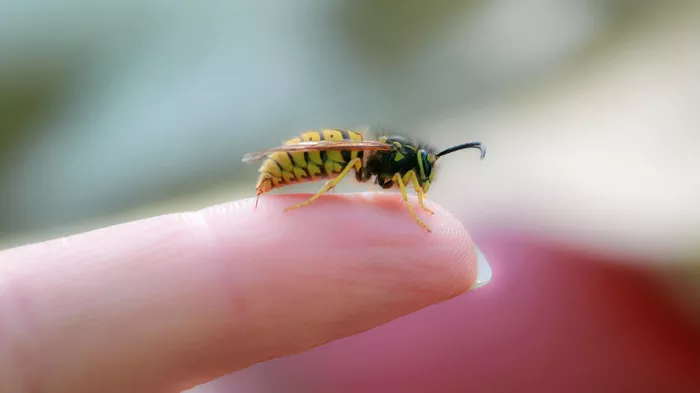Bee stings are a common occurrence, especially during the warmer months when bees are most active. While most bee stings result in mild irritation and discomfort, some individuals may experience more severe reactions that require prompt medical attention. Knowing how to properly manage bee sting reactions is essential for minimizing symptoms and preventing complications. In this comprehensive guide, we will discuss the various types of bee sting reactions, effective treatment options, and strategies for prevention.
Understanding Bee Sting Reactions
When a bee stings, it injects venom into the skin, which can trigger a range of reactions depending on the individual’s immune system and sensitivity to bee venom. Bee sting reactions can be classified into three main categories:
Normal Reaction: The majority of bee stings result in a normal reaction, characterized by localized pain, redness, swelling, and itching at the site of the sting. These symptoms typically resolve within a few hours to a few days and can be managed with over-the-counter remedies.
Large Local Reaction: Some individuals may experience a large local reaction to a bee sting, which involves more pronounced swelling and redness extending beyond the immediate sting site. Large local reactions can be uncomfortable and may take several days to resolve completely but generally do not pose a serious health risk.
Systemic Reaction: In rare cases, bee stings can trigger a systemic allergic reaction, known as anaphylaxis, which is a medical emergency. Symptoms of anaphylaxis may include difficulty breathing, swelling of the face or throat, rapid heartbeat, dizziness, and loss of consciousness. Anaphylaxis requires immediate medical attention and may be life-threatening if left untreated.
Treatment Options for Bee Sting Reactions
The appropriate treatment for a bee sting reaction depends on the severity of symptoms and the type of reaction experienced. Here are some effective treatment options:
Remove the Stinger: If a bee stinger is visible in the skin, it should be removed as soon as possible to prevent further venom injection. The stinger can be gently scraped out using a fingernail or a credit card, taking care not to squeeze or pinch the venom sac attached to the stinger.
Clean the Area: After removing the stinger, the affected area should be cleaned with soap and water to reduce the risk of infection. Avoid rubbing or scratching the sting site, as this can exacerbate irritation and spread venom.
Apply a Cold Compress: Applying a cold compress or ice pack to the sting site can help reduce pain, swelling, and inflammation. Wrap the ice pack in a cloth to protect the skin and apply it to the affected area for 10 to 15 minutes at a time, several times a day.
Over-the-Counter Medications: Non-prescription pain relievers such as ibuprofen or acetaminophen can help alleviate discomfort associated with bee stings. Antihistamines such as diphenhydramine (Benadryl) may also be used to relieve itching and swelling.
Topical Remedies: Over-the-counter topical remedies such as hydrocortisone cream or calamine lotion can help soothe itching and reduce inflammation at the sting site. These products should be applied according to the manufacturer’s instructions.
Seek Medical Attention: If symptoms persist or worsen despite home treatment, or if signs of a systemic allergic reaction such as difficulty breathing or swelling of the face occur, seek prompt medical attention. Anaphylaxis requires immediate treatment with epinephrine and may necessitate hospitalization for further observation and management.
Prevention Strategies
While bee stings cannot always be prevented, there are several strategies individuals can employ to reduce their risk of being stung:
Avoidance: Be mindful of areas where bees are likely to be present, such as gardens, flowering plants, and outdoor dining areas. If possible, avoid wearing brightly colored clothing or floral patterns, which may attract bees.
Stay Calm and Still: If a bee approaches, remain calm and avoid swatting or making sudden movements, as this can provoke the bee to sting. Instead, slowly and gently move away from the bee’s vicinity.
Protective Clothing: When spending time outdoors, especially in areas where bees are prevalent, wear long sleeves, pants, and closed-toe shoes to minimize exposed skin. Consider wearing light-colored clothing, as bees are less attracted to light colors.
Use Repellents: Consider using insect repellents containing DEET or picaridin to deter bees and other stinging insects. Apply repellents according to the manufacturer’s instructions and reapply as needed, especially if sweating or swimming.
Be Aware of Nesting Sites: Be mindful of potential bee nesting sites, such as hollow trees, eaves, and outdoor structures. Take precautions when working or playing in these areas and consider enlisting professional pest control services to address bee nests safely.
Conclusion
Bee stings are a common occurrence that can range from mild irritation to potentially life-threatening allergic reactions. Knowing how to properly manage bee sting reactions is essential for minimizing symptoms and preventing complications. By understanding the different types of bee sting reactions, recognizing the signs of an allergic reaction, and employing effective treatment and prevention strategies, individuals can reduce their risk of bee stings and respond appropriately if stung. If you have a history of severe allergic reactions to bee stings, consider consulting with an allergist or immunologist to develop a personalized management plan and discuss the possibility of allergen immunotherapy (allergy shots) to reduce your sensitivity to bee venom.
[inline_related_posts title=”You Might Be Interested In” title_align=”left” style=”list” number=”6″ align=”none” ids=”8713,8709,8641″ by=”categories” orderby=”rand” order=”DESC” hide_thumb=”no” thumb_right=”no” views=”no” date=”yes” grid_columns=”2″ post_type=”” tax=””]






























